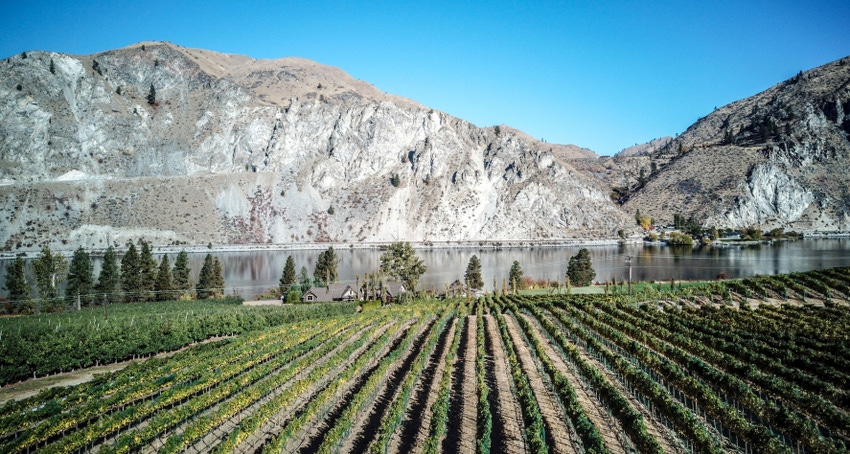October 28, 2021

Vineyard soils require adequate nutrients for growing healthy grapes, but testing plants for nutrients is a cumbersome, outdated process that takes considerable time and effort.
A four-year, $4.75 million Specialty Crop Research Initiative (SCRI) USDA-NIFA grant will fund a national team of researchers and extension educators to improve plant testing and fertilizer recommendations for grape growers.
“The fertilizer guidelines that were developed 50 years ago are outdated, and the industry needs to realize that relying on these old guidelines is not going to give them the best return on investment,” said Markus Keller, Chateau Ste. Michelle distinguished professor for WSU’s Viticulture & Enology program, and the project leader.
The current testing process often requires leaves or fruit tissue samples be sent to a lab. Results can take weeks, by which time it’s often too late to change nutrient supply for the current growing season. It can also be expensive and unpredictable.
“We want to give grape growers the chance to sample earlier, make decisions immediately, and be able to act on those decisions before the following growing year,” Keller said.
The High Resolution Vineyard Nutrient Management Project Team includes 14 scientists from seven institutions across the US and Mendoza, Argentina. WSU researchers involved in the project include Qin Zhang, professor of Agricultural Automation, Manoj Karkee, associate professor for Precision and Automated Agricultural Systems, Jim Harbertson, associate professor for Enology, and project manager Thomas Groenveld.
The team’s goals include plans to build remote sensors able to assess plant nutrient status from the air, and the creation of new guidelines on how to measure and adjust the nutrient status of grapevines.
Camera sensors mounted on a tractor driving up and down vineyard rows, or on a drone flying over the vineyard, might give growers near-real-time data. That would allow more informed decisions on what nutrients their grapevines need and where in a vineyard they are needed most, rather than sampling just one plant or section of a large vineyard plot.
Minimizing impact
“If we fertilize the entire vineyard as a one size fits all approach, it could lead to an imbalance in fertilization that could damage crops or end up polluting local groundwater,” said Keller. “We want to minimize the environmental impact while improving the quality of the fruit.”
The project’s social science and extension focus group sent a survey to grape industry stakeholders nationwide to see what growers are currently doing for vineyard nutrition. Despite less than 10% of their annual budgets being spent on vineyard nutrition, 75% of the over 300 respondents said soil nutrition was either ‘extremely’ or ‘very’ important’ for the yield and quality of wine and grape products.
“Macro nutrients like potassium and nitrogen allow vine growth and development. However, it can be hard to measure their presence in the plant, since the amount of nutrients can change during the season,” said Pierre Davadant, a PhD student at WSU and research assistant for Markus Keller’s lab.
Davadant, along with postdoctoral scientist Nataliya Shcherbatyuk, have collected scores of samples from commercial vineyards of wine and juice grapes for use in the study.
It will likely take a few years before results are available.
The team is fertilizing and observing blocks of Sauvignon Blanc, Syrah, and Chardonnay grapes at cooperating Ste. Michelle Wine Estates vineyards from winter until harvest. They’ll ferment the grapes at the WSU Wine Science Center to study how differences in vine nutrient status affect wine quality.
The Auction of Washington Wines, Washington State University, and all Washington state wine grape growers and wineries through the Washington State Wine Commission provided seed money for the project to help leverage support of USDA-NIFA and continue to provide supplemental support for the project.
To learn more about the vineyard nutrition project, visit the High Resolution Vineyard Nutrient Management website. Visit WSU’s Viticulture and Enology website to learn more about the V&E program.
Source: Washington State University, which is solely responsible for the information provided and is wholly owned by the source. Informa Business Media and all its subsidiaries are not responsible for any of the content contained in this information asset.
You May Also Like




